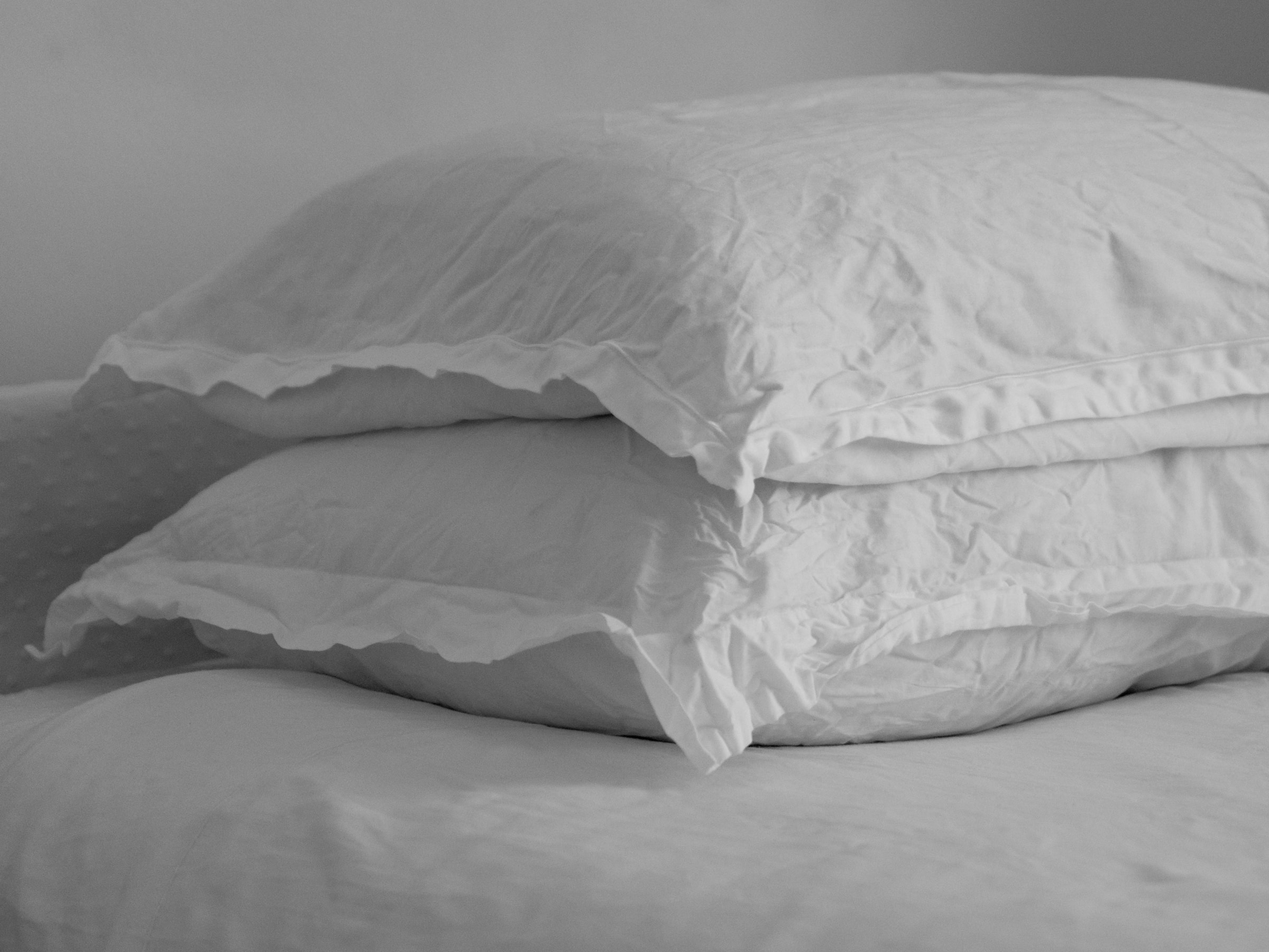From every night when we go to sleep until every morning when we wake up, we rest our heads on pillows. More than a quarter of each day, we rely on them for comfort, support, rest, etc. But how often do we really consider their true value and give our pillow the care it needs?
Keeping our pillows clean
According to WebMD, your pillow should be washed at least twice a year. If you eat in bed, have pets or sweat a lot, you should wash them as often as four times a year. While most people use pillowcases, they are not a substitute for routine cleaning. Bacteria and fungi caused by breathing, hair, drool and dead skin cells can seep through the outer protective fabrics of a pillow and into the inner-filling material. This is why proper pillow care is important.
How to wash our pillows
There are a variety of ways to wash a pillow, but the best method to do so will fluctuate depending on the type you have.
Down feather and silk
These types of pillows can be put in a washing machine with cool water, as high temperatures can damage the materials.
Polyester
This type can also be put in a washing machine; however, it is best to use less detergent than usual. One tablespoon on a gentle cycle with warm water will do the trick.
Latex or memory foam
Hand-washing best suits these types of pillows, as the agitation of a washing machine could break up the foam inside.
Buckwheat hull
The hulls inside these pillows can be emptied into a pan or bowl and set into the sun to remove odors. One may also use mild detergent and cold water.
Buying a new pillow
According to the Sleep Foundation, many experts suggest people replace their pillows once every one to two years as part of pillow care. They find that as time passes, pillows tend to become less supportive and hygienic. You will be able to tell if you need a new pillow if it begins to show signs of aging, including stains, odors, physical wear and tear or loss of shape.
Buying a new pillow, however, is often harder than it seems. With so many shapes, sizes and functions, it can be overwhelming to find one that best suits you.
According to Sleep Doctor, a key point to consider when selecting a pillow is your preferred sleep position.
Back sleepers
It is important to find a pillow that will support the natural curve of your neck; a medium-firm memory foam pillow conforms to the shape of your neck and is a great option to consider.
Side sleepers
Side sleepers require a considerable amount of support, both in height (approximately 4 to 6 inches) and level of firmness; heavier fill materials like buckwheat hulls, memory foam,
Stomach sleepers
A pillow that is softer with a lower height is preferred for stomach sleepers; down and feather pillows are a great option to consider.
Smart sleeping
Ultimately, the proper way to sleep is whichever way is most comfortable for each person. No two people will share the exact sleep preference, whether they sleep on their back, stomach or side. But, if you begin to see a continuing pattern of soreness, neck pain or back pain from sleep, here are some helpful rules and reminders to keep in mind:
- When sleeping on your back or side, your pillow should rest underneath your head and neck but not your shoulders; aim for your head to be parallel to the mattress.
- Sleeping on your stomach can strain your neck or back. If you are a stomach sleeper and experience frequent discomfort, consider switching things up. If sleep causes you unwanted back pain, lying on your back can help align your spine to its natural curve. It is further recommended to place a pillow beneath your knees for additional support.
Related articles
Is it OK to Sleep a Stuffed Animal as an Adult?
Sleep: It’s Probably More Important Than You Think
Should You be Sleeping with Your Pet?

